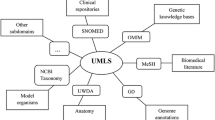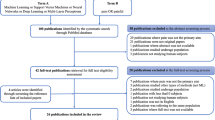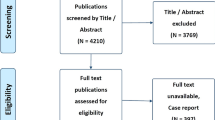Abstract
Pain management is a critical international health issue. The Eugene McDermott Center for Pain Management at The University of Texas Southwestern Medical Center conducted a two-stage interdisciplinary pain management program that considers a wide variety of treatments. Prior to treatment (beginning of Stage 1), an evaluation records the patient’s pain characteristics, medical history and related health parameters. A treatment regime is then determined. At the midpoint of the program (beginning of Stage 2), an evaluation is conducted to determine if an adjustment in the treatment should be made. A final evaluation is conducted at the end of the program to assess final outcomes. We structure this decision-making process using dynamic programming (DP) to generate adaptive treatment strategies for this two-stage program. An approximate DP solution method is employed in which state transition models are constructed empirically based on data from the pain management program, and the future value function is approximated using state space discretization based on a Latin hypercube design and artificial neural networks. The optimization seeks for treatment plans that minimize treatment dosage and pain levels simultaneously.







Similar content being viewed by others
References
Ahles TA, Blanchard EB, Ruckdeschel JC (1983) The multidimensional nature of cancer related pain. Pain 17(3):277–288
Alagoz O, Maillart LM, Schaefer AJ, Roberts MS (2004) The optimal timing of living-donor liver transplantation. Manag Sci 50(10):1420–1430
Cady J (2001) Understanding opioid tolerance in cancer pain. Oncol Nurs Forum 28(10):1561–1570
Cervellera C, Chen VCP, Wen A (2006) Optimization of a large-scale water reservoir network by stochastic dynamic programming with efficient state space discretization. Eur J Oper Res 171:1139–1151
Cervellera C, Wen A, Chen VCP (2007) Neural network and regression spline value function approximations for stochastic dynamic programming. Comput Oper Res 34(1):70–90
Cervellera C, Macciò D (2010) A comparison of global and semi-local approximation in T-stage stochastic optimization. Eur J Oper Res 208(2):109–118
Chen VCP, Ruppert D, Shoemaker CA (1999) Applying experimental design and regression splines to high-dimensional continuous-state stochastic dynamic programming. Oper Res 47:38–53
Chen VCP, Tsui KL, Barton RR, Meckesheimer M (2006) Design, modeling, and applications of computer experiments. IIE Trans 38:273–291
Chhatwal J (2008) Optimal management of mammography findings for breast cancer diagnosis: Patient’s perspective. Dissertation, The University of Wisconsin-Madison
Collins LM, Murphy SA, Strecher V (2007) The Multiphase Optimization Strategy (MOST) and the Sequential Multiple Assignment Randomized Trial (SMART): new methods for more potent eHealth interventions. Am J Prev Med 35(5):S112–S118
D’Arcy, Y. M. (2007). Pain management: Evidence-based tools and techniques for nursing professionals. Marblehead, MA
Dawson R, Lavori PW (2003) Comparison of designs for adaptive treatment strategies: baseline vs. adaptive randomization. J Stat Plann Infer 117:365–385
Deardorff WW, Rubin HS, Scott DW (1991) Comprehensive multidisciplinary treatment of chronic pain: a follow-up study of treated and non-treated groups. Pain 45:35–43
Eccleston Z, Eccleston (2004) Interdisciplinary management of adolescent chronic pain: developing the role of physiotherapy. Physiotherapy 90:77–81
European Medical Tourist (2010) Oswestry disability questionnaire. European Medical Tourist http://www.europeanmedicaltourist.com/spine-surgery/oswestry-disability.html
Fan HY (2008) Sequential frameworks for statistics-based value function representation in approximate dynamic programming. Dissertation, The University of Texas at Arlington
Flor H, Fydrich T, Turk DC (1992) Efficacy of multidisciplinary pain treatment centers: a meta-analytic review. Pain 49:221–230
Gould HJ (2007) Understanding pain: What it is, Why it happens, and How it’s managed. AAN Press, New York, NY
Hernán MA, Lanoy E, Costagliola D, Robins JM (2006) Comparison of dynamic treatment regimes via inverse probability weighting. Basic Clin Pharmacol Toxicol 98:237–242
Kerns RD, Finn P, Haythornthwaite J (1988) Self-monitored pain intensity: psychometric properties and clinical utility. J Behav Med 11:71–82
Lavori PW, Rush AJ, Wisniewski SR, Alpert J, Fava M, Kupfer DJ, Nierenberg A et al (2001) Strengthening clinical effectiveness trials: equipoise-stratified randomization. Biol Psychiatry 50(10):792–801
MathWorks (2010) Optimization toolbox. MathWorks http://www.mathworks.com/help/toolbox/optim/ug/fmincon.html
McGuire MT, Troisi A (1987) Physiological regulation-deregulation and psychiatric disorders. Ethol Sociobiol 8(1):9–25
McGuire DB (1992) Comprehensive and multidimensional assessment and measurement of pain. J Pain Symptom Manag 7(5):312–319
Melzack R, Wall PD (1965) Pain mechanisms a new theory. Science 150:971–979
Melzack R, Wall PD (1982) The challenge of pain. New York, NY
Melzack R, Wall PD (1988) The challenge of pain, (2nd edn). London and New York, NY
Murphy SA (2003) Optimal dynamic treatment regimes. J R Stat Soc 65(2):331–355
Murphy SA (2005) An experimental design for the development of adaptive treatment strategies. Stat Med 24(10):1455–1481
Murphy SA, Lynch KG, Oslin D, McKay JR, TenHave T (2007) Developing adaptive treatment strategies in substance abuse research. Drug Alcohol Depend 88S:S24–S30
Olason M (2004) Outcome of an interdisciplinary pain management program in a rehabilitation clinic. Work 22:9–15
Pineau J, Bellemare MG, Rushb AJ, Ghizaru A, Murphy SA (2007) Constructing evidence-based treatment strategies using methods from computer science. Drug Alcohol Depend 88:S52–S60
Raj PP (2003) Pain medicine: A Comprehensive Review (2nd edn). St. Louis, Missouri
Rivera DE, Pew MD, Collins LM (2007) Using engineering control principles to inform the design of adaptive interventions: a conceptual introduction. Drug Alcohol Depend 88S:S31–S40
Robbins H, Gatchel RJ, Noe C, Gajraj N, Polatin P, Deschner M, Vakharia A, Adams L (2003) A prospective one-year outcome study of interdisciplinary chronic pain management: compromising its efficacy by managed care policies. Anesth Analg 97:156–162
Robins JM (1999) Association, causation, and marginal structural models. Synthese 121:151–179
Rush AJ, Crismon ML, Kashner TM et al (2003) Texas Medication Algorithm Project, phase 3 (TMAP-3): rationale and study design. J Psychiatr Clin Pract 64(4):357–369
SAS Institute Inc (2010) SAS/STAT(R) 9.2 User’s guide. SAS Institute Inc http://support.sas.com/documentation/cdl/en/statug/63033/HTML/default/viewer.htm#statugregsect007.htm
Schaefer AJ, Bailey MD, Shechter SM, Roberts MS (2004) Modeling medical treatment using Markov decision processes. In: Brandeau M, Sainfort F, Pierskalla WP (eds) Chapter 23 in Operations Research and Health Care: A Handbook of Methods and Applications. Kluwer, Boston, p 593–612
Schaefer LS, Tariot PN, Lyketsos CG, Dagerman KS, Davis KL, Davis S, Hsiao JK et al (2001) National Institute of Mental Health Clinical Antipsychotic Trials of Intervention Effectiveness (CATIE): Alzheimer disease trial methodology. Am J Geriatr Psychiatr Off J Am Assoc Geriatr Psychiatr 9(4):346–360
Schatman ME, Campbell A, Loeser JD (2007) Chronic pain management guidelines for multidisciplinary program development. New York, NY
Main CJ, Spanswick CC (2000) Pain management: An interdisciplinary approach. Edinburgh
Stone RM, Berg DT, George SL, Dodge RK, Paciucci PA, Schulman P, Lee EJ et al (1995) Granulocyte-macrophage colony-stimulating factor after initial chemotherapy for elderly patients with primary acute myelogenous leukemia. Cancer Leuk B New Engl J Med 332(25):1671–1677
Tejada-Guibert JA, Johnson SA, Stedinger JR (1993) Comparison of two approaches for implementing multi-reservoir operating policies derived using dynamic programming. Water Resour Res 29:3969–3980
Tummarello D, Mari D, Graziano F et al (1997) A randomized, controlled phase III study of cyclophosphamide, doxorubicin, and vincristine with etoposide (CAV-E) or teniposide (CAV-T), followed by recombinant interferon-alpha maintenance therapy or observation, in small cell lung carcinoma patients with complete responses. Cancer 80(12):2222–2229
Turk DC, Melzack R (2001) Handbook of pain assessment (2nd edn). New York, NY
Turk DC (2001) Chronic pain: Models and treatment approaches. In: JS Editors-in-Chief: Neil & BB Paul (ed) International encyclopedia of the Social & Behavioral Sciences. Pergamon, Oxford, p 1782–1789
Yang Z, Chen VCP, Chang ME, Murphy TE, Tsai JCC (2007) Mining and modeling for a metropolitan atlanta ozone pollution decision-making framework. IIE Trans 39:607–615
Yang Z, Chen VCP, Chang ME, Sattler ML, Wen A (2009) A decision-making framework for ozone pollution control. Oper Res 57(2):484–498
Author information
Authors and Affiliations
Corresponding author
Rights and permissions
About this article
Cite this article
Lin, CF., LeBoulluec, A.K., Zeng, L. et al. A decision-making framework for adaptive pain management. Health Care Manag Sci 17, 270–283 (2014). https://doi.org/10.1007/s10729-013-9252-0
Received:
Accepted:
Published:
Issue Date:
DOI: https://doi.org/10.1007/s10729-013-9252-0




